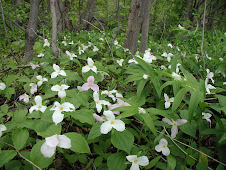
"Plant your own garden and decorate your own soul, instead of waiting for someone to bring you flowers." - Veronica A. Shoffstall
Container growing can be remarkably satisfying especially, but not exclusively, if you have limited space. I love to have potted flowers on my deck! If you pick the right flowers you will get the birds and the bees like hummingbirds and are able to see these wonderful birds up close.
So before you start picking containers decide where you want them to be. Just outside a kitchen window in a window box? Large wooden planters on a porch in the corners? Around the swimming pool deck?
Next we need to think about the container type.
You can plant your flowers in containers of mixed styles, shapes, material and height. Some containers make beautiful displays to brighten up a patio corner, against a bare wall or on either side of an outside stairway. There are so many pots in various shapes and sizes. There are clay, plastic, ceramic, wire pots, tubs and buckets. Containers you attach to the house (window box) and containers you hang off your railings or hang from posts. Containers that sit on the deck, patio or porch. You choose. You are the artist! Show your colours!
Ensure your containers have good drainage in them. Check to see if your containers have drain holes to prevent over watering and provide air circulation for healthy plants. If there are none put a layer of gravel or pebbles in the bottom of the pot.
Next is to choose the soil. Potting soil is rich in organic material. Added Vermiculite works to help the soil drain and keep it moist. Remember to add a slow release granular fertilizer to the soil to give your plants a great start.
Alright, so, you know where the containers are going, what type of containers you want and you have several bags of good potting soil. Off to the Garden Centre!!!!

No, not yet. Do a little research. You need a "planting plan". Select flowers and plants that compliment each other. Some flowers bloom pink, red, yellow or variegated, have huge blossoms or clusters of little tiny blossoms. Some are trailers, other uprights. You can talk to the gardener at your local Garden plant center. Look plants up online or if you are daring, just experiment with different kinds of plants. You can check out the labels for height, type, sun exposure and watering requirements.I like to add in plants that have showy foliage and trail down to the deck to go with my flowers, like Ipomea (Sweet Potato Plant). Gives the "overflowing look". I like to get height in a planter so often will put a tall grass in the middle.
I have listed a few options of flowering plants and foliage plants that work well in planters.
Annuals suitable for containers:
Alyssum, Begonia, Browallia, Coleus, Geraniums, Impatiens, Lantana, Lobellia, Marigolds,Periwinkle, Nasturtiums, Pansies, Salvia, Petunias, Sanvitalia, Snapdragons, Thunbergia, Zinnias
Some plants that are great for colourful foliage:
Hedera (English Ivy), Ipomea, Lamium, Pedilanthus, Pseuderanthemum, Strobilanthes(Persian Shield), Vinca
What ever you choose enjoy your containers. If you are not too fond of a plant this year, don't use it next year. You may just find your favorite types of plants or try different plants every year. Experiment! Enjoy!
Would not have been my choice in a container but to each their own

!
 Pruning is usually done in the late spring, once you can see your lavender showing new growth.
Pruning is usually done in the late spring, once you can see your lavender showing new growth.












